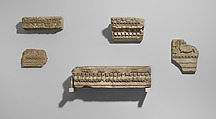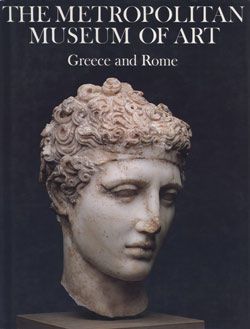Five marble architectural fragments
These highly elaborate fragments are believed to belong to the palace that the emperor Domitian had built on the Palatine hill between A.D. 81 and 92, in succession to the imperial residences that had been established there by Augustus, Tiberius, and Nero. The palace was designed by the architect Rabirius, who made much use of imported colored marble, pools, and fountains in the decoration of the vast complex. Another striking feature was the height of the various state rooms. The Aula Regia (the main audience chamber), for example, had an interior façade of three stories and a ceiling some one hundred feet above the floor. The grand suite of halls was where the emperor greeted and sometimes entertained well-to-do members of Roman society, ambassadors from the provinces, and foreign princes. Little now survives of the grandeur of the imperial palace, although it remained in use well into later Roman times and underwent numerous alterations and additions during the intervening period. In the Middle Ages, it became a ready source for marble, and later, the site for several Italian villas and gardens.
The five pieces comprise different elements of the entablature, which decorated the upper part of the building:
06.970a Cornice block with dentils and egg-and-dart motifs
06.970b Architrave lintel block from between two columns
06.970c Fragment of a frieze depicting a sphinx
06.970d Cornice block with palmettes
06.970e Fragment of a frieze with a bucranium supporting swags
#1206. Five Marble Architectural Fragments
This image cannot be enlarged, viewed at full screen, or downloaded.



